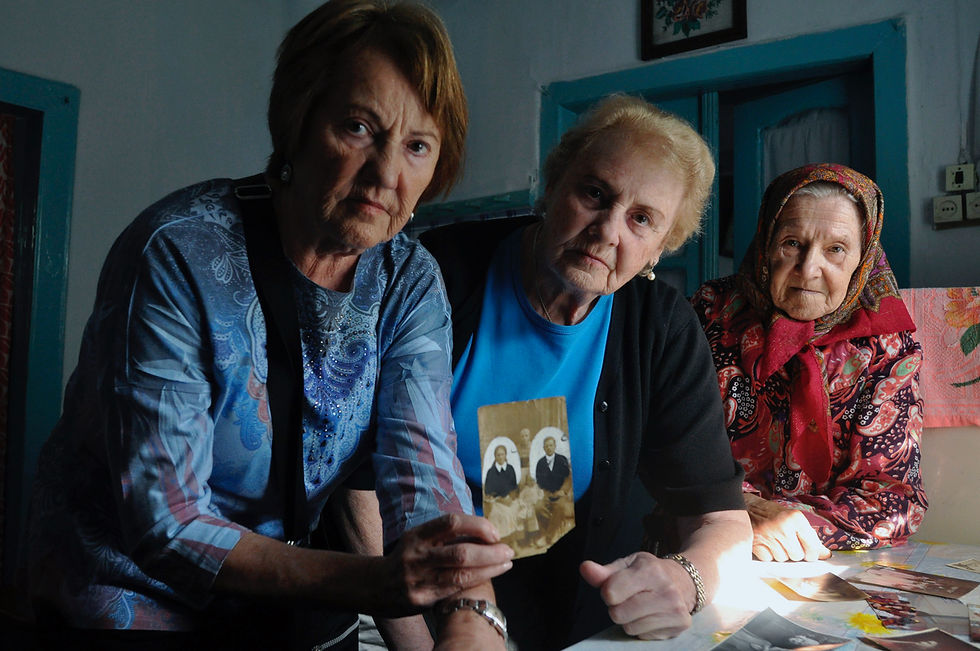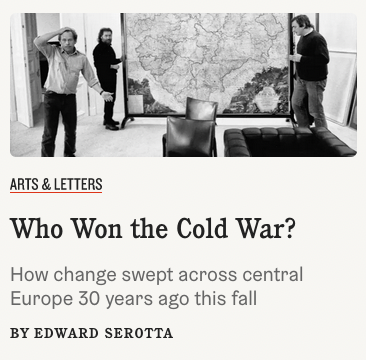The photographic and journalism archives of
Edward Serotta
Where it began for me: Romania, 1984-1989


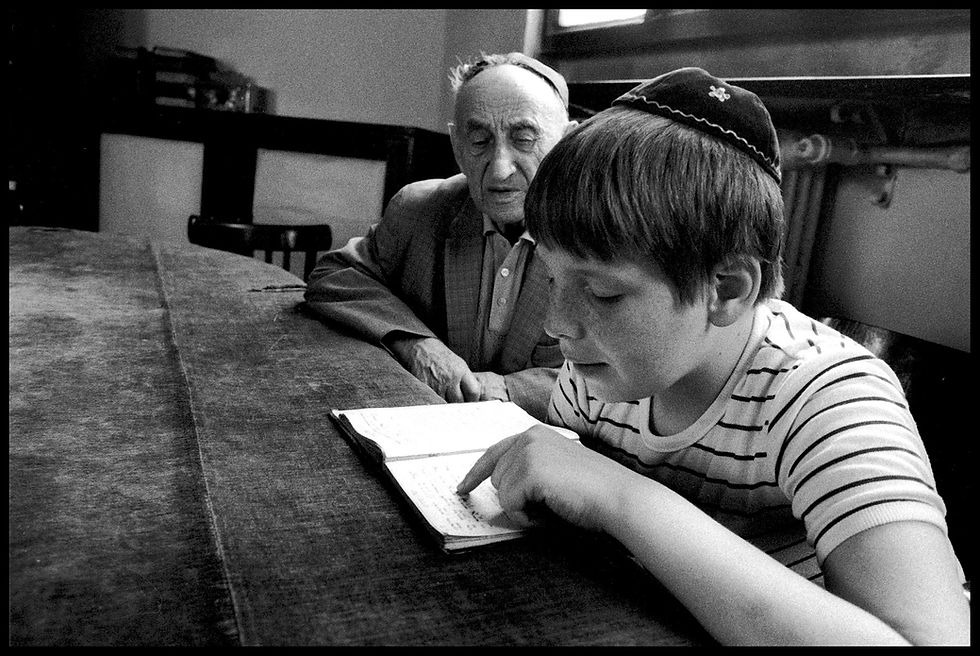


Top: Romania’s chief rabbi, Dr David Moses Rosen, in the Choral Temple in Bucharest, December, 1985.
Middle: Purim in the synagogue in Oradea, March, 1989. Sorin Segal’s bar mitzvah lesson, Bucharest, June, 1985.
Bottom: Funeral in Arad, July, 1987, Choir practice, Suceava synagogue, December, 1988.
The Holocaust
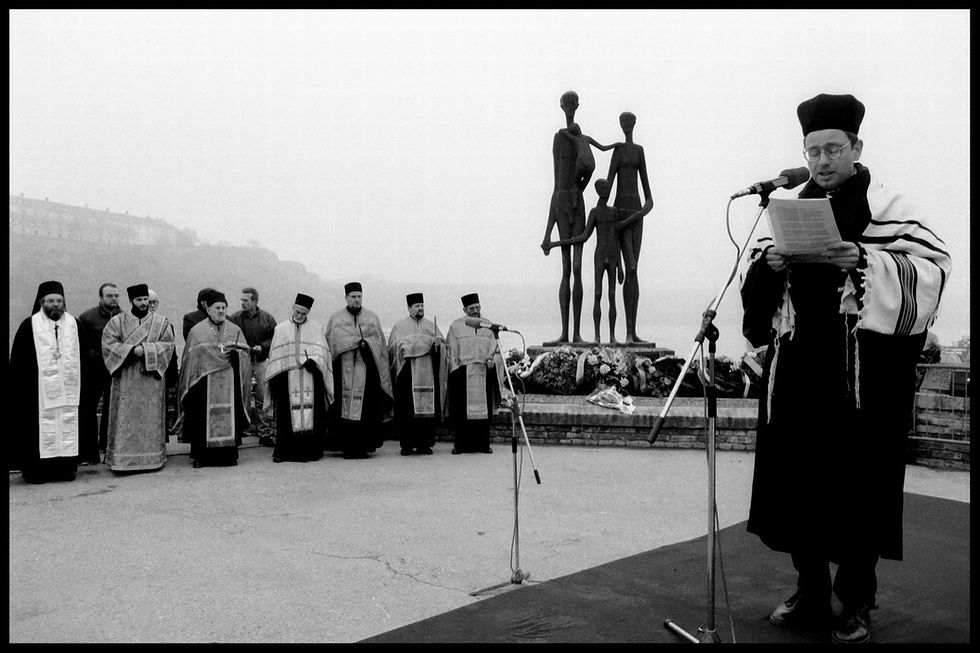



Top: View from entranceway at Birkenau, January 1995 and June 2000.
Middle:Serbian Chief Rabbi Isaac Asiel at a memorial service for the Jews of Novi Sad murdered by Hungarian soldiers in January 1941. He is joined by leaders of the Serbian Orthodox Church. January 1999. Commemoration service at the Dachau Concentration camp. May 1992.
Bottom: Victims of the Iron Guard pogrom in Bucharest, January 1941. Jewish cemetery , Bucharest, July 1987.
Milan Hamovic in the old Austro-Hungarian fortress of Vraca above Sarajevo. Photo taken in August 1988. The names of more than 9,000 Jewish victims were placed on the walls. In 1992 the Bosnian Serbs used Vraca as a gun emplacement and they used it to bomb Sarajevo. They destroyed all the names on its walls.
Jewish life in Central and Eastern Europe: 1985-1989





Top: Csaba and Otti at the Hanukkah dance in Budapest’s Gellert Hotel, 22 December, 1989. It was the first Hanukkah after the fall of Communism.
Middle: The sculptor Nandor Glid in his Belgrade studio, June, 1989. Dr Arno Parik of the Prague Jewish Museum with a painting of Albert Einstein, November, 1988.
Bottom: Simcha Weiss and friend inspecting the just-destroyed cemetery of Lublin, October, 1989. Petyus, a resident of the Budapest Jewish Hosptial, March, 1989.
The collapse of Communism 1989


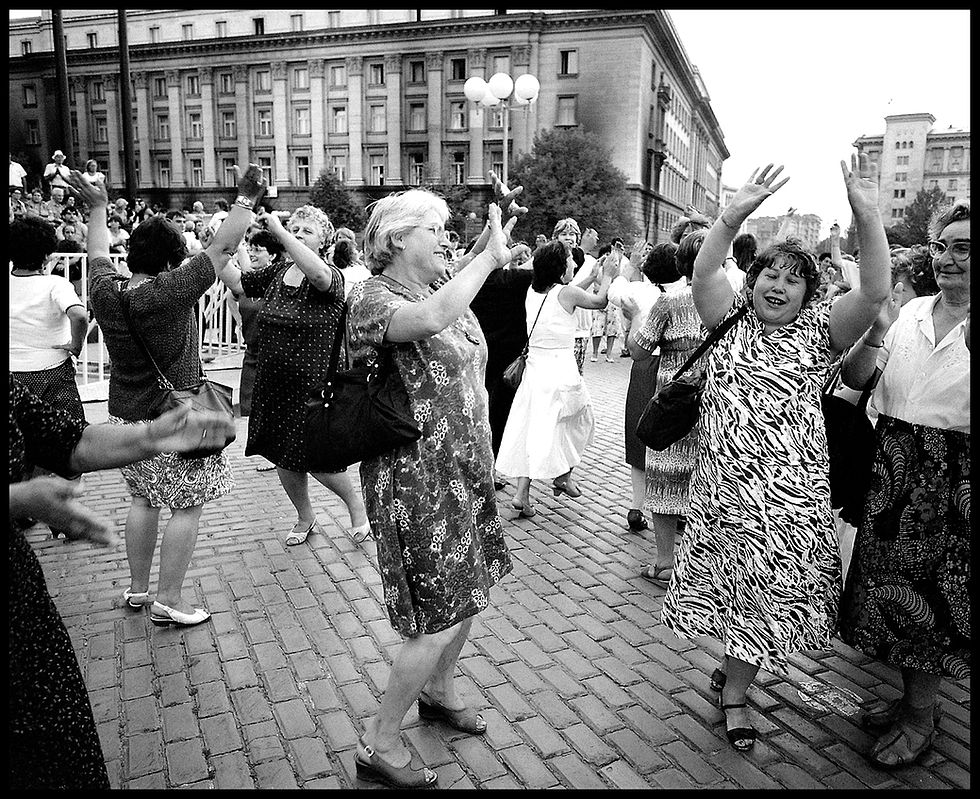


Top: Hospital in Arad, Romania, on 22 December, 1989 (New York Newsday).
Middle: Bye-bye Berlin Wall, November, 1989; Bulgarians dancing in the street in Sofia after Communist Party headquarters was burned, August, 1990.
Bottom: On the streets of Prague, December, 1989 (The Independent); Timisoara, Romania, January, 1990 (The Independent).
The wall fell. Doors opened. Jewish life in Central and Eastern Europe, 1990-1999

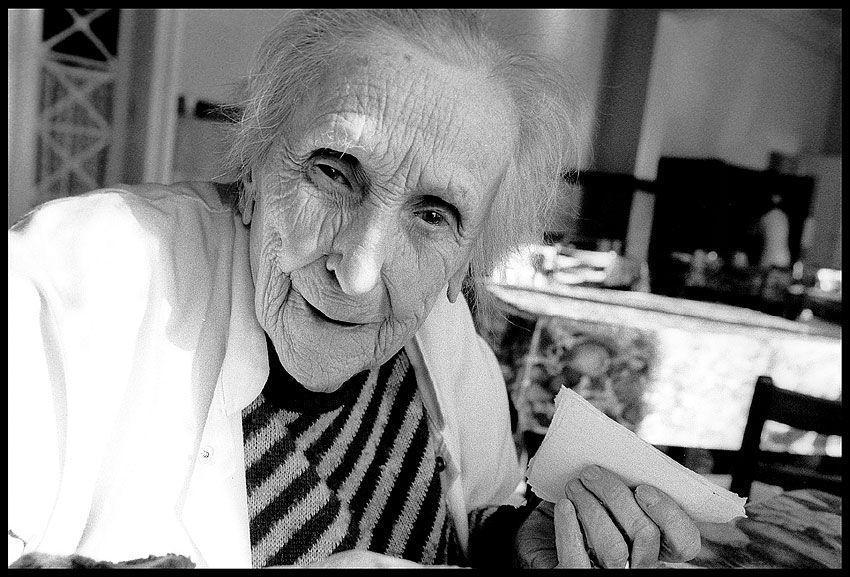



Top: Edi lights the menorah in the Fabrik synagogue in Timisoara. December, 1999.
Middle: Rozsi Jakab in the Arad, Romania, canteen, May, 1998. Students in the Lauder school in Prague, October, 1993.
Bottom: Svarvas summer camp, August, 1998. Dr Alexandrova visiting a patient at home in Sofia. January, 1995.
Jewish life in Russia, Ukraine, Belarus, 1992-1999

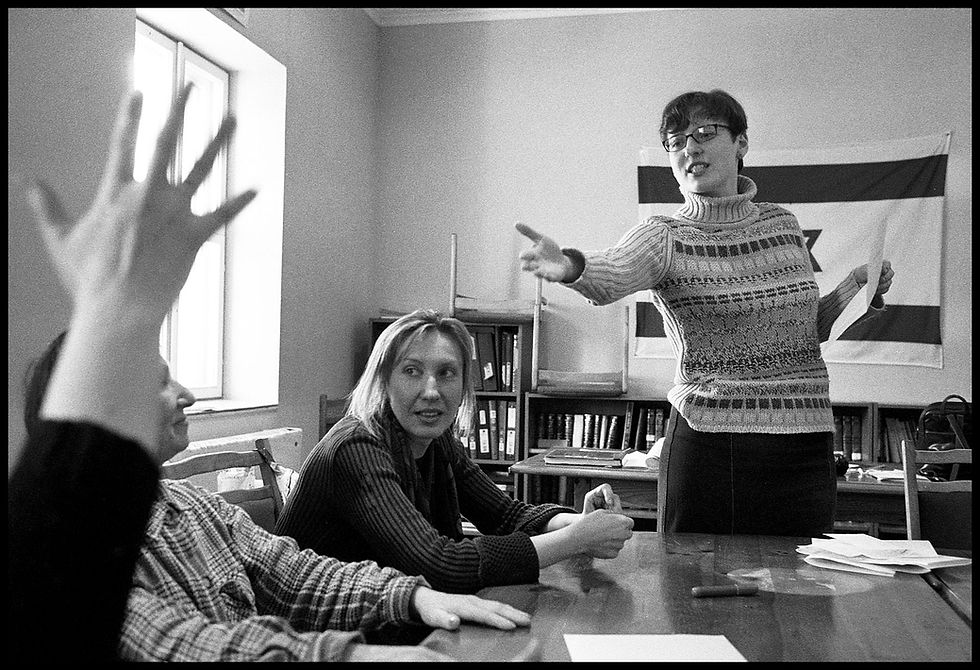


Top: Card sharks in the St Petersburg Hesed Center, November, 1992.
Middle: Hebrew school in Minsk, 1997; Jewish kitchen in the Ukrainian town of Bogoslav, 1998 (Time Magazine).
Bottom: Jewish community center, Kyiv, 1997.
Jewish life in the Baltic States, 1997-2000

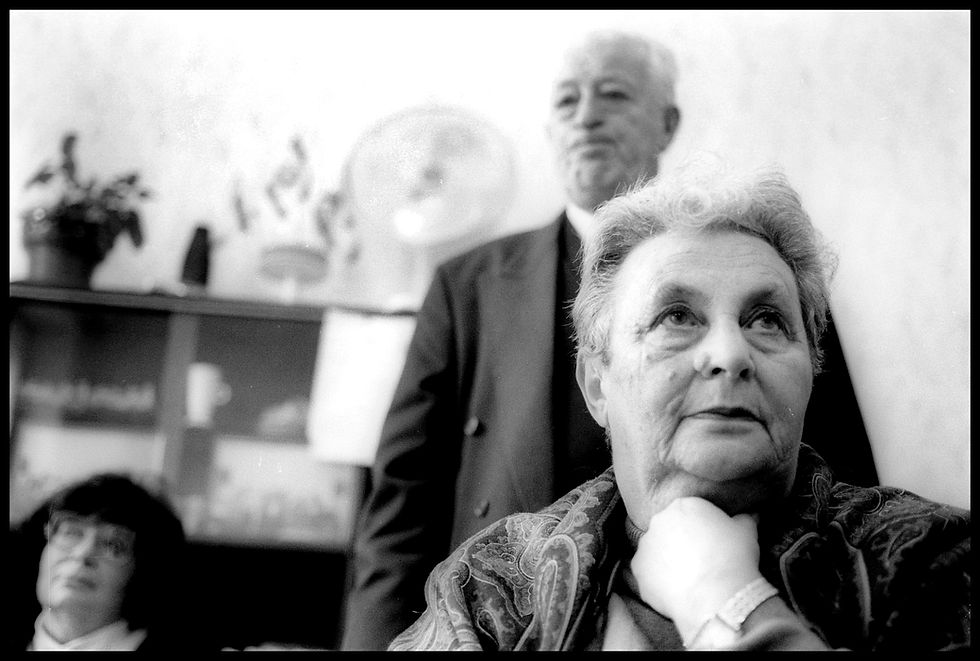



Top: 93-year-old Nina Erdetstajn belting out a Yiddish song in the Riga JCC, December, 1997.
Middle: Ranana Malkhanova and Simon Alperovic in the Vilnius Jewish communtiy office, March, 1997; Artur Baleruvich in the Jewish school of Vilnius, March, 1997.
Bottom: Hanukkah in the Riga Jewish community center, 1997; food delivery in Vilnius, 1997.
Jewish life in Germany, 1988-1996





Top: Walter Kahn visiting his home town in the Mosel River Valley for the first time in nearly 50 years, August, 1995.
Middle: Jewish youth club in Cologne, January, 1994 (Die Zeit); Purim in the Pestalozzistrasse synagogue, March, 1993, Berlin.
Bottom: Recent Russian arrival on the way to Sobernheim summer camp, July, 1993. Grandfather from Kiev with grandchildren arriving Cologne, October, 1995, (Time Magazine).
The siege of Sarajevo, 1993-1995


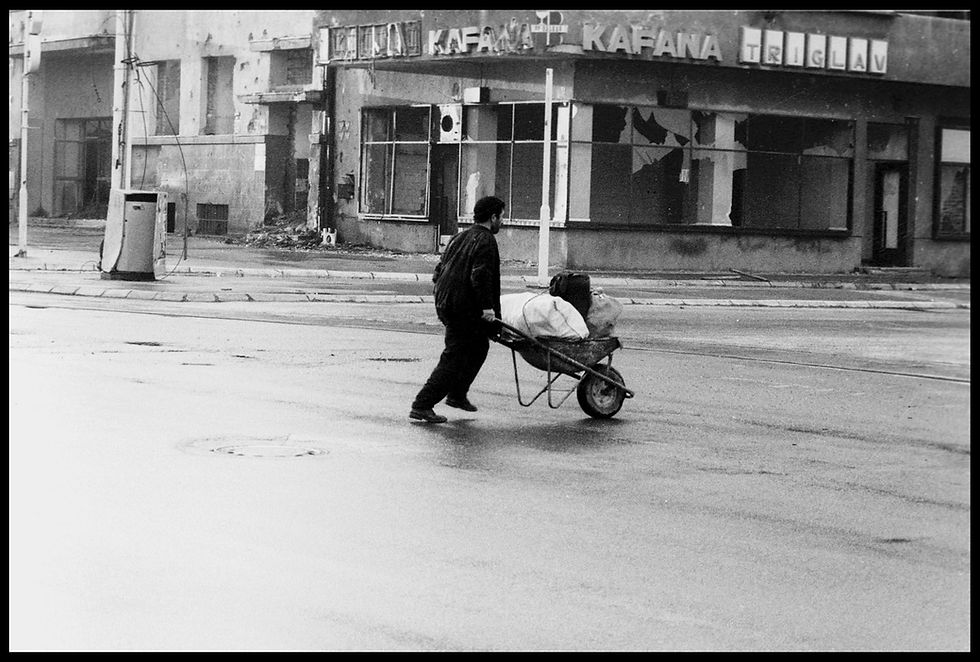


Top: Denis Karalic, a Bosniak Muslim, leaving Sarajevo for Israel on a JDC rescue convoy, February, 1994.
Middle and bottom: Scenes from the siege of Sarajevo. Photos taken for Time Magazine, The Independent, Die Zeit, Süddeutesche Zeitung. October, 1993-February, 1994
During Russia's full-scale invasion in Ukraine, 2022-2025





Top: Independence Day in Kyiv, August, 2022.
Middle: In the cemetery in Irpin, a suburb of Bucha, August, 2022. Ukrainian military rabbi in the Choral Synagogue, Kyiv, December, 2022.
Bottom: Migdal Jewish community center, Odesa, December, 2022. Dr Olena Yavorska of the Literature Museum in Odesa with a picture of Isaac Babel, September, 2023.
Recent journalism: long reads in Tablet Magazine
Left: 87-year old Basya Abramovna survived the Holocaust near her home in Chernihiv and refused to be evacuated in 2022 when the Russians nearly took the city. When I asked her if she even considered leaving, she slammed her palm on the table and said, “Nyet!”
Right: My name is Micha Tkachov. My twin sister’s name is Katya. When our parents were killed in a car crash when we were young, Natalia and Valery Tkachov adopted us. When I came out as gay, Natalia was my biggest supporter. On 3 March 2022 I was in Kyiv and the rest of the family was in Bucha. Katya said they were going out on the street to build barricades. I screamed, “Don’t do it!” Thirty minutes later she called me laughing hysterically and crying, telling me the Russians shot our father nine times and they shot mom once. Somehow we got Katya out of there. I had to go to the morgue to identify their bodies, even though they had been thrown into shallow graves and were covered with mud. It took me hours.
Right bottom: Shelly Weiner and Raya Kiznehrman were hidden with their mothers by the Paluschuk family in a village near Rivne.
About this Archive
“What Roman Vishniac did in illuminating the vanished world of Eastern European Jewry before the Holocaust, Serotta’s book will in its own turn do for the living, contemporary history of Europe’s Jews.” Cornell Capa, founder, International Center of Photography.
I spent fifteen years (1984-1999) taking photographs in one region, Central and Eastern Europe, and focusing on one theme, Jews, with the occasional revolution and war getting in my way. Then, while sunsetting my career at Centropa, history has pulled me back in as I have been writing about and photographing the current war in Ukraine.
When I embarked on my journey, Communism ruled, the Berlin Wall stood, and Jewish life was on life support. I began shooting in 1984, made trips of longer and longer duration until 1988, when I sold all of my possessions in Atlanta (except my books) and moved to Budapest.
From the day I arrived, I set a goal of spending two years on the road so I could publish a book on the last Jews of Eastern Europe. I met that deadline, but by then two things had gone wrong: no one wanted to be my last Jew, and Eastern Europe had vanished.
Once Communism fell, Jews began throwing off the mantel of remnant like a garment that no longer fit. True, most of the communities do not have the critical mass to carry them through another 50 years, but I came to believe they should be supported in their efforts to rebuild Jewish life, no matter what the future holds. After all, they paid retail for being Jewish during the long dark night of the 20th century.
It is because I took photographs with respect and empathy that my first book, Out of the Shadows, received such rave reviews when it was published in 1991—and that is why Cornell Capa offered an exhibition at the International Center of Photography. The review in the September 20, 1991, edition of The New York Times Book Review began with, “Get ready to shake loose a whole host of accepted notions about Jews in Central Europe.”
During the siege of Sarajevo, I traveled into the war zone so I could document how a Sephardic community was helping an entire city. In this European war, Jews were not the victims. In this European war, Jews were saving Christians and Muslims.
No sooner had Survival in Sarajevo been published in 1994 than I returned to my (then) home in Berlin to find another remarkable story: tens of thousands of Jews from the now-collapsed Soviet Union had been immigrating to Germany.
By 1996 there were 150,000 Russian Jews in towns and cities throughout the country: from small towns like Fürth and Saarbrücken to larger cities like Frankfurt and Berlin.
These new arrivals have given this community something it didn’t have a few years earlier: a future. Jews, Germany, Memory was published as a book in 1996 and the exhibition from it, purchased by the German Historical Museum in Bonn and the Zeughaus in Berlin, continues to travel it to this day.
The archive has been appraised at $2.6 million by Penelope Dixon (the same firm that appraised Howard Greenberg’s collection), and this work deserves to have a home in which it will be used by scholars.
This archive becomes even more important for historians because I have written copiously about what I was seeing, who I was meeting. The essays and articles I’ve written have been published in The Washington Post, Ha’aretz, TIME, Die Zeit, Tablet, The Guardian, The Independent and other publications. That means in decades to come, researchers will not only find award-winning, compelling photographs, but the stories that go with them.
At this writing, in January, 2024, I have spent fifteen weeks in wartime Ukraine. I have not often been close to the front, but I have written hundreds of pages of notes and nearly twenty articles that will prove invaluable in the years to come.
I would like to see my archive find a home in an institution that will make excellent use of it and I’d be glad to have a conversation with any foundation that would be interested in helping make this happen.
Thank you for reading this.
Sincerly,
Edward Serotta




